Taken over by Wetherspoon, The Dee Hotel takes its name from its location on Dee Bank. The hotel was enlarged in the 1930s, when it got its distinctive Tudor-style façade.
Prints and text about The Dee Hotel.
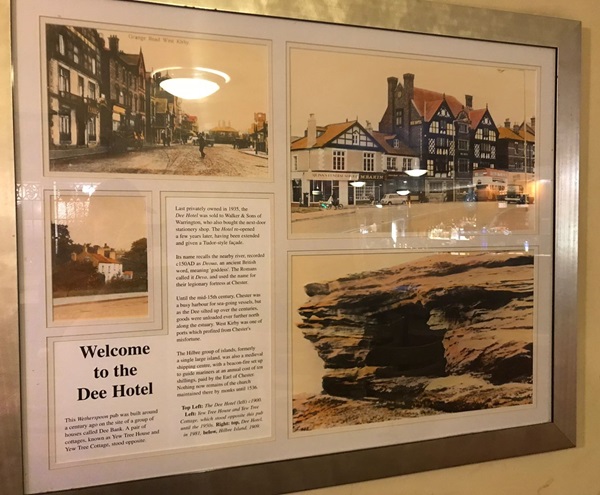
The text reads: This Wetherspoon pub was built around a century ago on the site of a group of houses called Dee Bank. A pair of cottages, known as Yew Tree House and Yew Tree Cottage, stood opposite.
Last privately owned in 1935, the Dee Hotel was sold to Walker & Sons of Warrington, who also bought the next-door stationery shop. The Hotel re-opened a few years later, having been extended and given a Tudor-style façade.
Its name recalls the nearby river, recorded c150AD as Deoua, an ancient British word, meaning ‘goddess’. The Romans called it Deva, and used the name for their legionary fortress at Chester.
Until the mid-15th century, Chester was a busy harbour for sea-going vessels, but as the Dee silted up over the centuries, goods were unloaded ever further north along the estuary. West Kirby was one of ports which profited from Chester’s misfortune.
The Hilbre group of islands, formerly a single large island, was also a medieval shipping centre, with a beacon-fire set up to guide mariners at an annual cost of ten shillings, paid by the Earl of Chester. Nothing now remains of the church maintained there by monks until 1536.
Top Left: The Dee Hotel (left) c1900
Left: Yew Tree House and Yew Tree Cottage, which stood opposite this pub until the 1950s
Right: top, Dee Hotel, in 1981, below, Hilbre Island, 1909.
Prints and text about early days in Kirby.
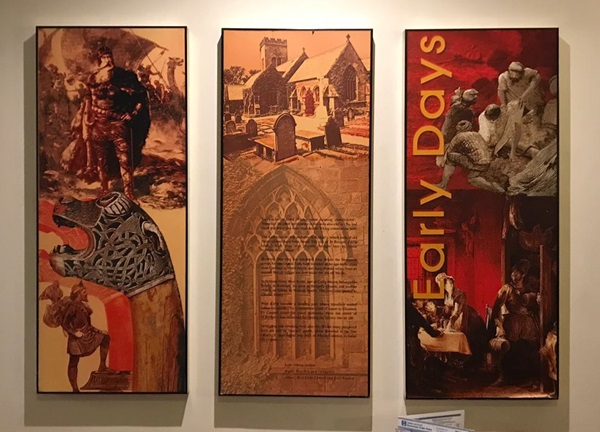
The text reads: Kirby is an old Norse (Viking) name, meaning ‘church-town’. Names of the other settlements in this area also end in – by, and show that there was once considerable Viking colonisation here.
The Kirk (church) was probably St Bridget’s, where parts of old Norse crosses have been found. The cult of St Bridget, a fifth century Irish saint, was probably brought here by Norse converts from Ireland.
However, this area was inhabited long before the Norsemen come. Archaeological finds have included stone-age tools, coins from Carthage in North Africa, and many Roman relics, from an ancient British village site now under the sea off Meols.
In Norman times, West Kirby, part of Caldy Manor, belonged to Robert de Rodelent. He gave St Bridget’s Church, and another church on Hilbre, to Norman monks. The town later passed to Chester Abbey.
West Kirby became a wealthy port, where travellers waited (often for months) for a favourable wind. A report to Elizabeth I’s Council noted the many alehouses. Even the curate of St Bridget’s was dismissed for turning the rectory into an inn.
Smuggling and wrecking were also rife. Whilst many prospered from the sale of ‘rescued’ goods, others drowned in the Dee estuary. A ‘dead house’ was built on Meols Common to house the corpses.
Left: Viking raiders
Right: Wreckers and Smugglers
Above: West Kirby Church and East Window
Text about the silver screen.
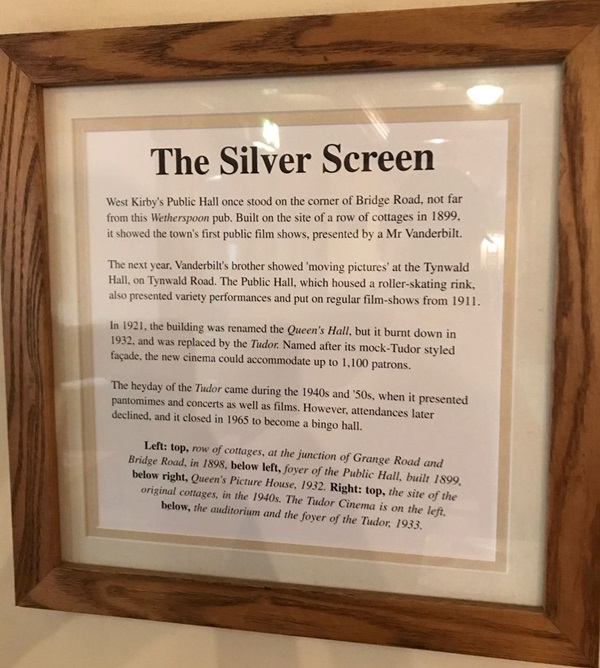
The text reads: West Kirby’s Public Hall once stood on the corner of Bridge Road, not far from this Wetherspoon pub. Built on the site of a row of cottages in 1899, it showed the town’s first public film shows, presented by a Mr Vanderbilt.
The next year, Vanderbilt’s brother showed ‘moving pictures’ at the Tynwald Hall, on Tynwald Road. The Public Hall, which housed a roller-skating rink, also presented variety performances and put on regular film-shows from 1911.
In 1921, the building was renamed the Queen’s Hall, but it burnt down in 1932, and was replaced by the Tudor. Named after its mock-Tudor styled façade, the new cinema could accommodate up to 1,100 patrons.
The heyday of the Tudor came during the 1940s and 50s, when it presented pantomimes and concerts as well as films. However, attendances later declined, and it closed in 1965 to become a bingo hall.
Left: top, row of cottages, at the junction of Grange Road and Bridge Road, in 1898, below left, foyer of the Public Hall, built 1899, below right, Queen’s Picture House, 1932
Right: top, the site of the original cottages, in the 1940s. The Tudor Cinema is on the left, below, the auditorium and the foyer of the Tudor, 1933.
Prints and text about Meols.
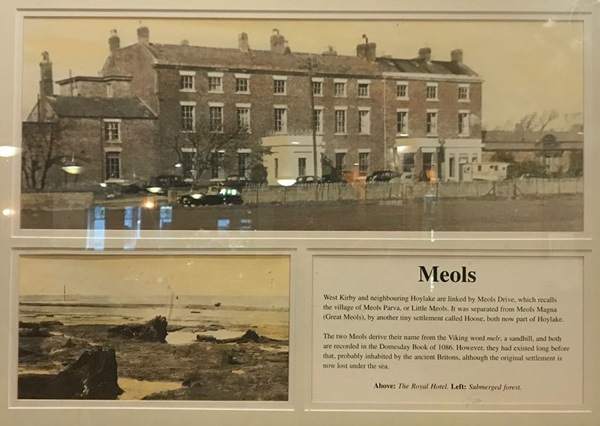
The text reads: West Kirby and neighbouring Hoylake are linked by Meols Drive, which recalls the village of Meols Parva, or Little Meols. It was separated from Meols Magna (Great Meols), by another tiny settlement called Hoose, both now part of Hoylake.
The two Meols derive their name from the Viking word melr, a sandhill, and both are recorded in the Domesday Book of 1086. However, they had existed long before that, probably inhabited by the ancient Britons, although the original settlement is now lost under the sea.
Above: The Royal Hotel
Left: Submerged forest.
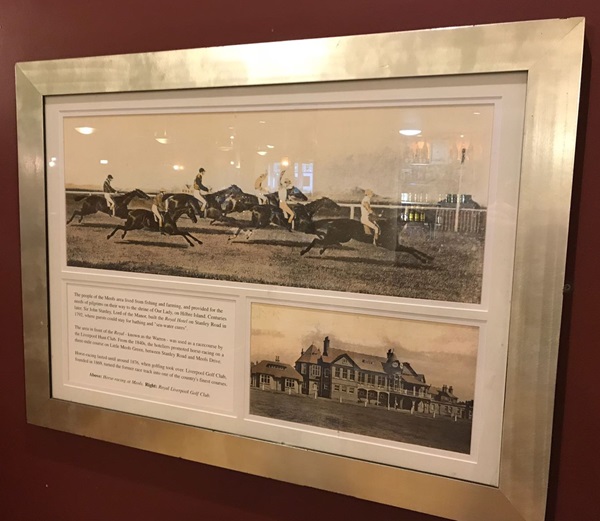
The text reads: The people of the Meols area lived from fishing and farming, and provided for the needs of pilgrims on their way to the shrine of Our Lady, on Hilbre Island. Centuries later, Sir John Stanley, Lord of the Manor, built the Royal Hotel on Stanley Road in 1792, where guests could stay for bathing and “sea-water cures”.
The area in front of the Royal – known as the Warren – was used as a racecourse by the Liverpool Hunt Club. From the 1840s, the hoteliers promoted horse-racing on a three-mile course on Little Meols Green, between Stanley Road and Meols Drive.
Horse-racing lasted until around 1876, when golfing took over. Liverpool Golf Club, founded in 1869, turned the former race track into one of the country’s finest courses.
Above: Horse-racing at Meols
Right: Royal Liverpool Golf Club
Old photographs of Kirby.
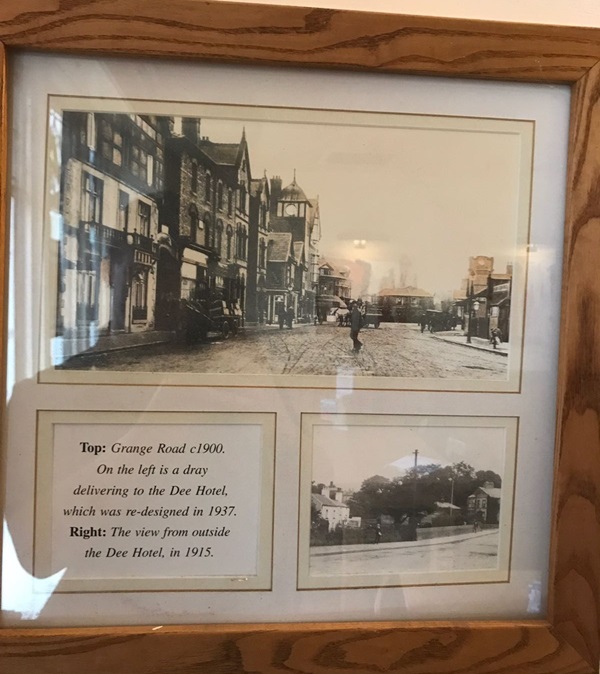
Top: Grange Road c1900. On the left is a dray delivering to the Dee Hotel, which was re-designed in 1937
Right: The view from outside the Dee Hotel, in 1915.
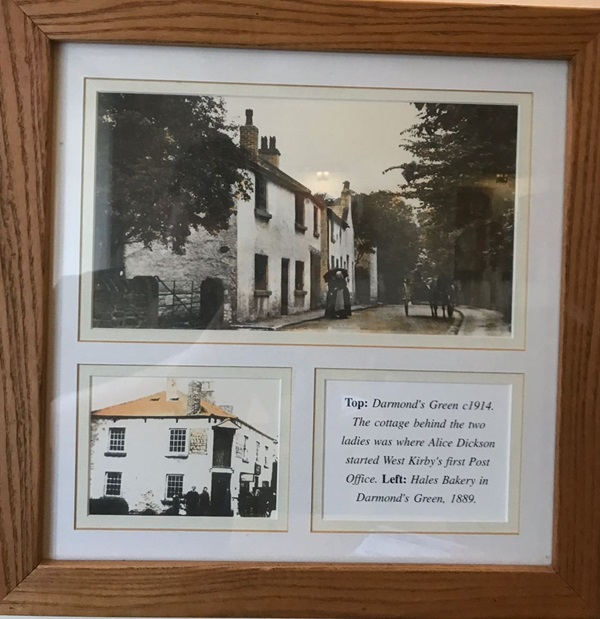
Top: Darmond’s Green c1914. The cottage behind the two ladies was where Alice Dickson started West Kirby’s first post office
Left: Hales Bakery in Darmond’s Green, 1889.
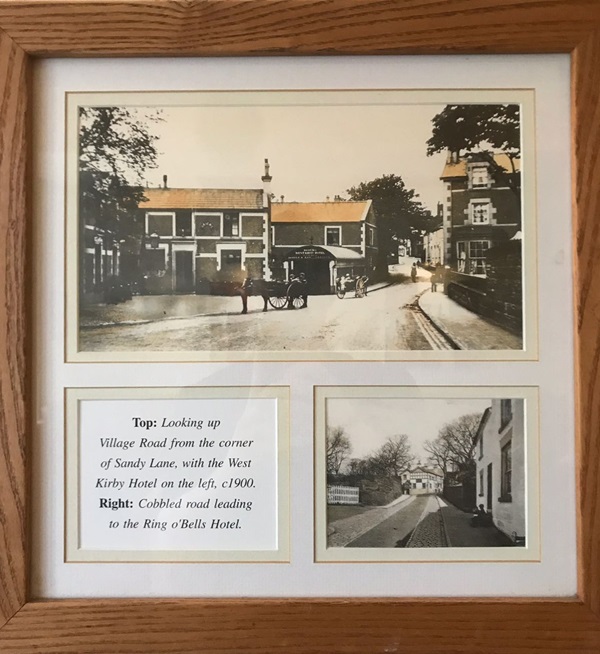
Top: Looking up Village Road from the corner of Sandy Lane, with the West Kirby Hotel on the left, c1900
Right: Cobbled road leading to the Ring o’Bells Hotel.
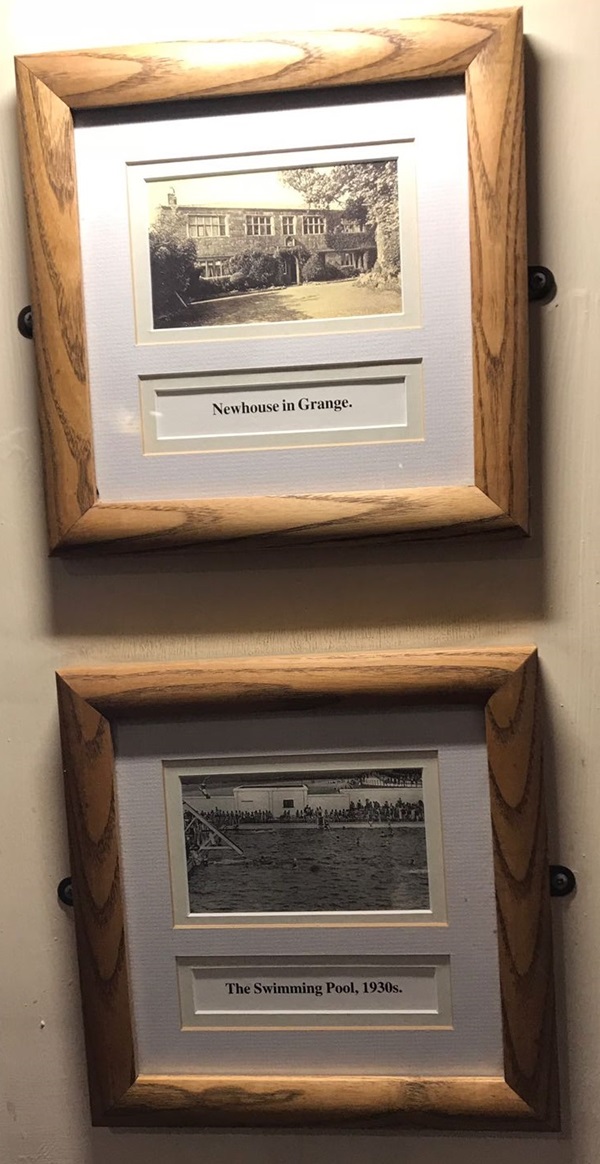
Top: Newhouse in Grange
Bottom: The swimming pool, 1930s.
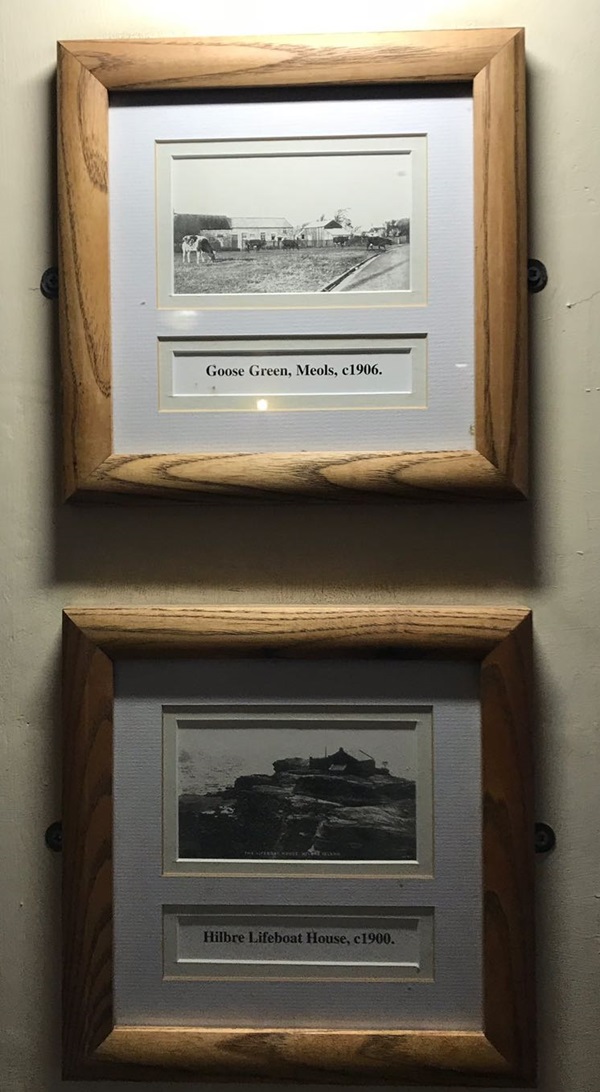
Top: Goose Green, Meols, c1906
Bottom: Hilbre Lifeboat House, c1900.
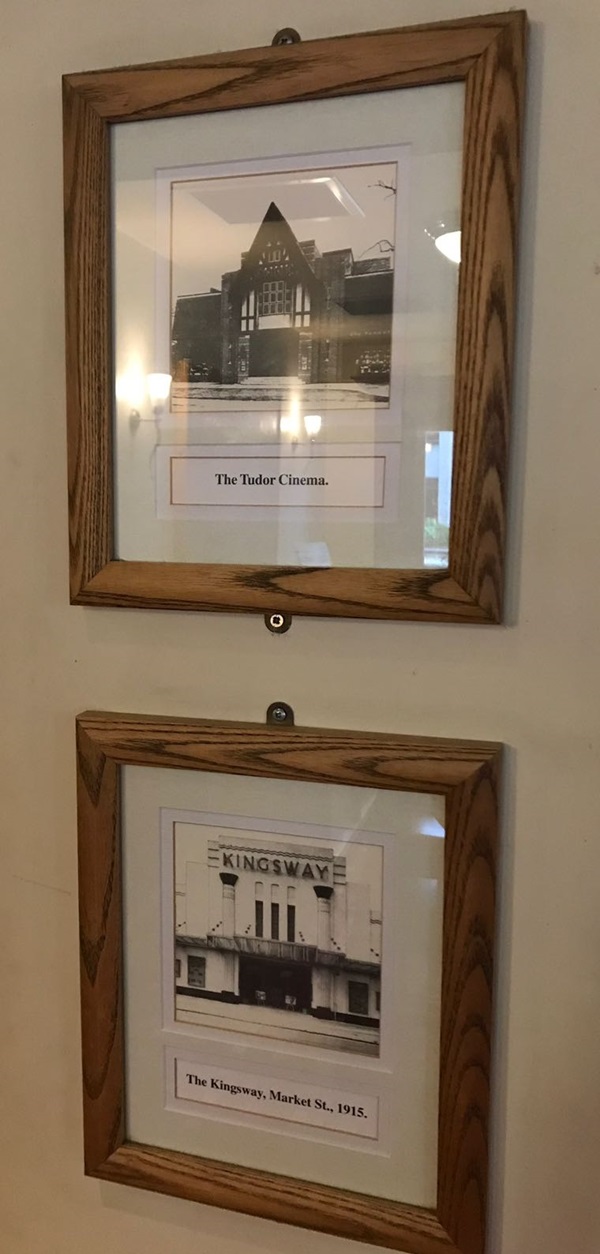
Top: The Tudor Cinema
Bottom: The Kingsway, Market St, 1915.
External photograph of the building – main entrance.
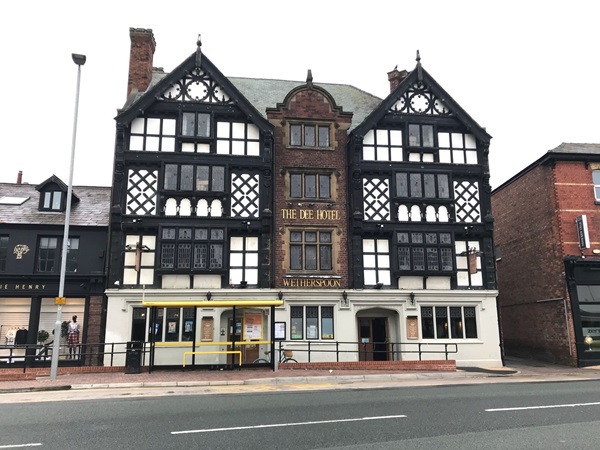
If you have information on the history of this pub, then we’d like you to share it with us. Please e-mail all information to: pubhistories@jdwetherspoon.co.uk